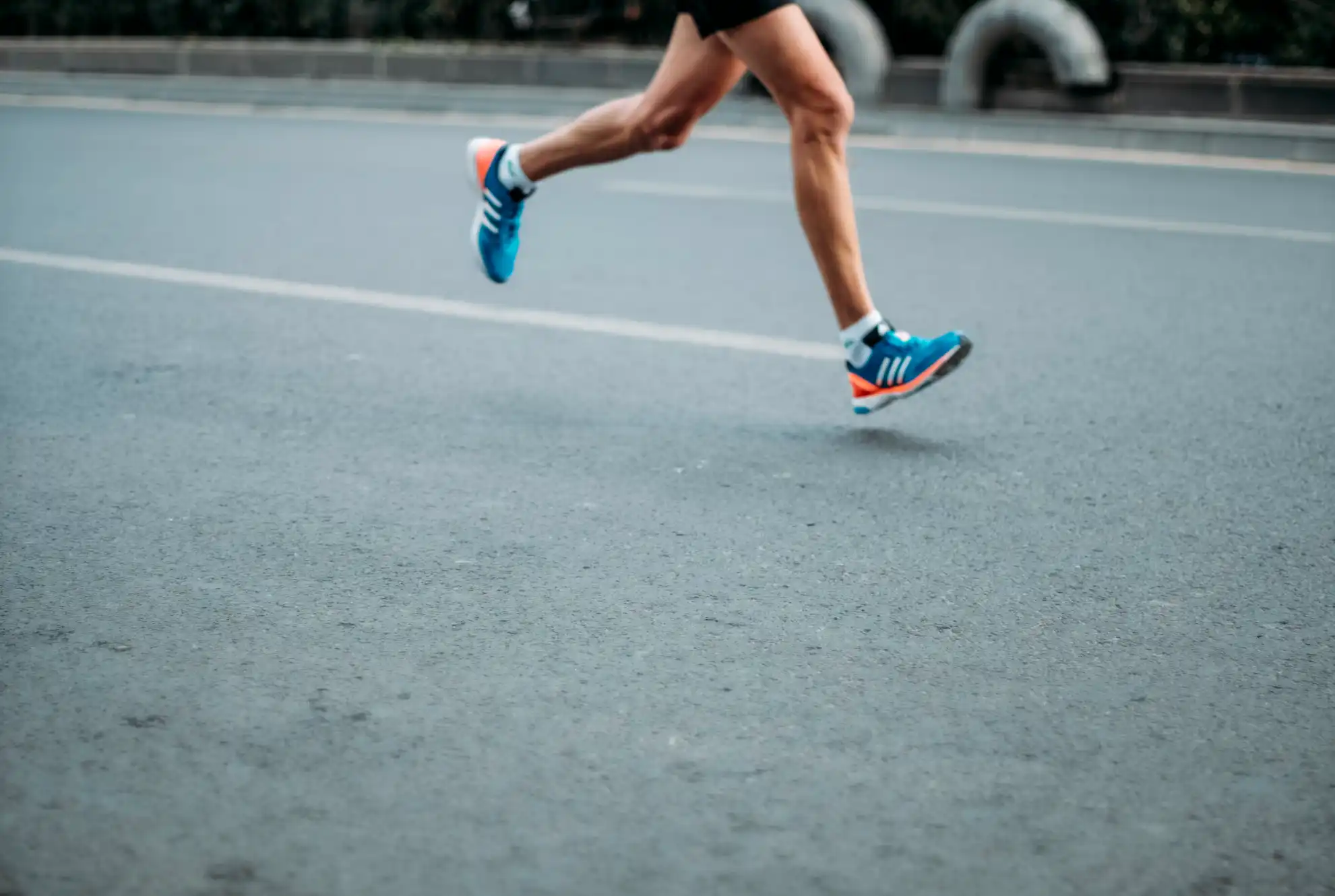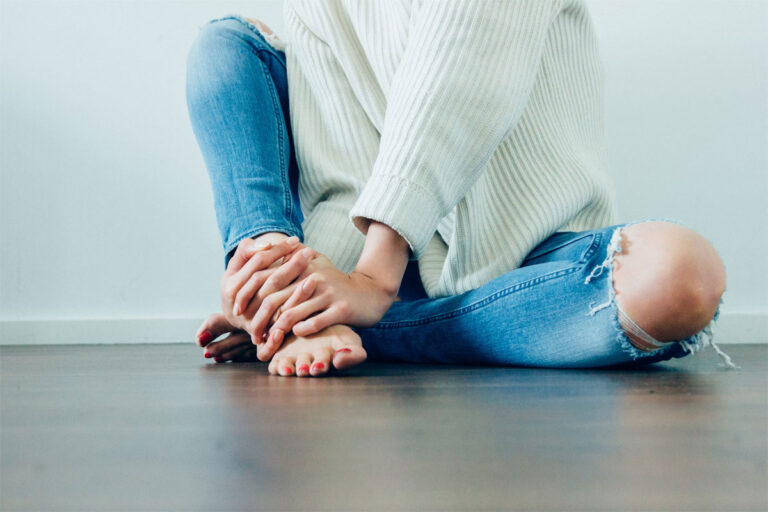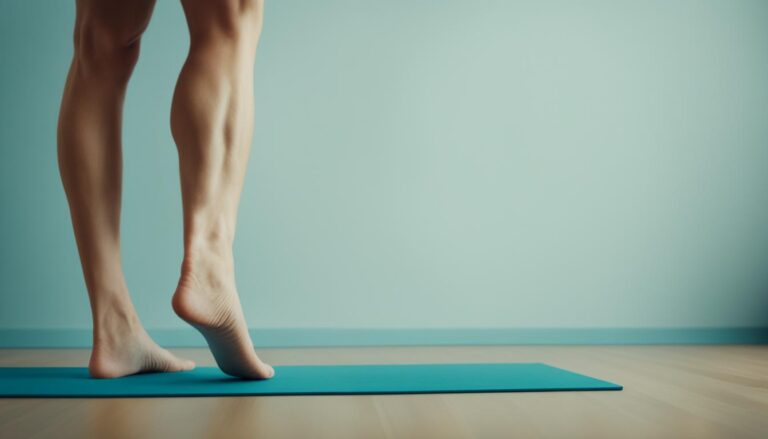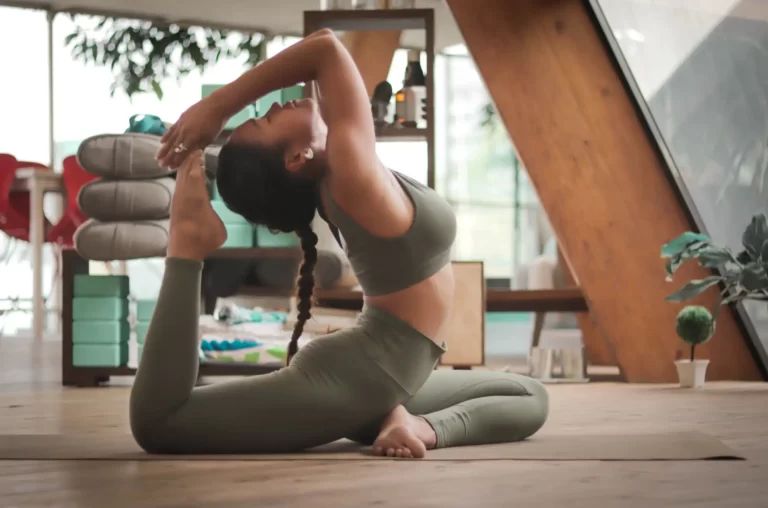Squatting with Flat Feet: Tips for Proper Form and Safety
Sometimes, mastering a squat can be hard, especially if you have flat feet. But don’t worry, you’re not alone. Squatting with flat feet is tricky, but with right efforts, you can do it well and get strong.
This guide will cover the special problems of those with flat feet when squatting. It will offer tips and help, no matter if you’re just starting or have been lifting for a while. Knowing how to squat properly with flat feet is key. It helps you avoid getting hurt, move better, and boost your squat’s power.
Key Takeaways
- Flat feet can lead to overpronation, impacting your squat form and stability.
- Proper squat technique is essential for those with flat feet to avoid injury and maximize effectiveness.
- Tailored modifications to your squat stance and foot positioning can help you find the most optimal and comfortable setup.
- Strengthening the feet and improving ankle mobility are crucial for improving your squat performance with flat feet.
- Choosing the right footwear can make a significant difference in your ability to squat with flat feet.
So, what’s the secret to squatting with flat feet? Let’s dive in and find out!
Understanding Flat Feet and Its Challenges
Flat feet mean the arches of your feet are low or totally gone. This can make your foot roll in too much when you move, called overpronation. When you exercise, like during squats, this overpronation can mess with your form. It can lead to shakey movements, knees moving too much inward, and put extra pressure on your joints.
Overpronation and Its Impact on Squatting
If you have flat feet, your feet might roll in too much when you squat. This can make you less stable and in control. Keeping your feet and ankles in a good line is harder. It can cause more pain in your knees, hips, or lower back during hard workouts.
Flat Feet: Structural or Functional?
Knowing why you have flat feet is key. It helps pick the best way to manage it. Flat feet can come from the way your feet are shaped (structural) or from muscle problems (functional). Each type might need different care. For example, some need special shoes or insoles, while others might do better with certain exercises. Figuring out the cause can help make your workouts better fit your needs.
Importance of Proper Squat Form
Keeping the right squat form is key, especially for those with flat feet. Doing squats wrong can up your chance of getting hurt and not seeing good results. It’s vital to know the proper form if you’re new or have been lifting for a while. This is how you can do squats safely and well, even with flat feet.
Avoiding Injury and Maximizing Effectiveness
Good squat form stops injuries and helps work the right muscles. Bad technique, like leaning too far forward or letting your knees cave in, can hurt your joints and make pain likely. By focusing on getting the squat form right, you can dodge these issues and get the most from squats.
Proper Stance and Foot Positioning
Your stance width and foot placement are critical for staying safe during squats and keeping balanced. This is especially true for people with flat feet. Try different stances and foot positions to see what works best. This helps you squat with good form, use your stabilizing muscles, and stay strong.
Mastering the squat with flat feet takes time and trying out different things. But keeping your form right is the first step to getting stronger, moving better, and avoiding injuries.
Squatting with Flat Feet
Squatting with flat feet needs a special approach. We will help you look at your unique needs. These could be trouble with moving easily, muscles not working well, or problems with staying steady. After looking at these, we’ll suggest how to adjust your squat. This includes where to place your feet, how low to go, and how to spread your weight. Doing this will make squatting more comfortable for you.
Assessing Your Individual Needs
The first step when squatting with flat feet is to figure out what you need. We will check your ability to move, if your muscles are in balance, and how well you can stay steady. This lets us create a plan that fits your exact issues. It will help you do the squat correctly and without harm.
One big thing to look at is how well your ankles move. People with flat feet usually can’t move their ankles much, which can affect how deep they can squat. We’ll do tests to see how your ankles move. This will help us understand what’s making your flat feet worse.
Finding out about muscle imbalances is also key. Flat feet can mean your foot muscles are weaker than normal. Your leg muscles might also not be working the right way. With the right exercises, we can fix these imbalances. This will make you more solid and in control while you squat.
Modifying Your Squat Technique
After looking at what you need, we will suggest changes to make your squat better. These could be moving your feet, changing how wide you stand, or adjusting your squat depth.
For instance, a wider stance might be good if you have flat feet. It can make you more stable. We might also say to not squat as low at first. Then, as you get stronger and more flexible, you can try going deeper.
By customizing your squat, it will fit your needs better. This makes the exercise safer, more comfortable, and more effective for building lower-body strength.
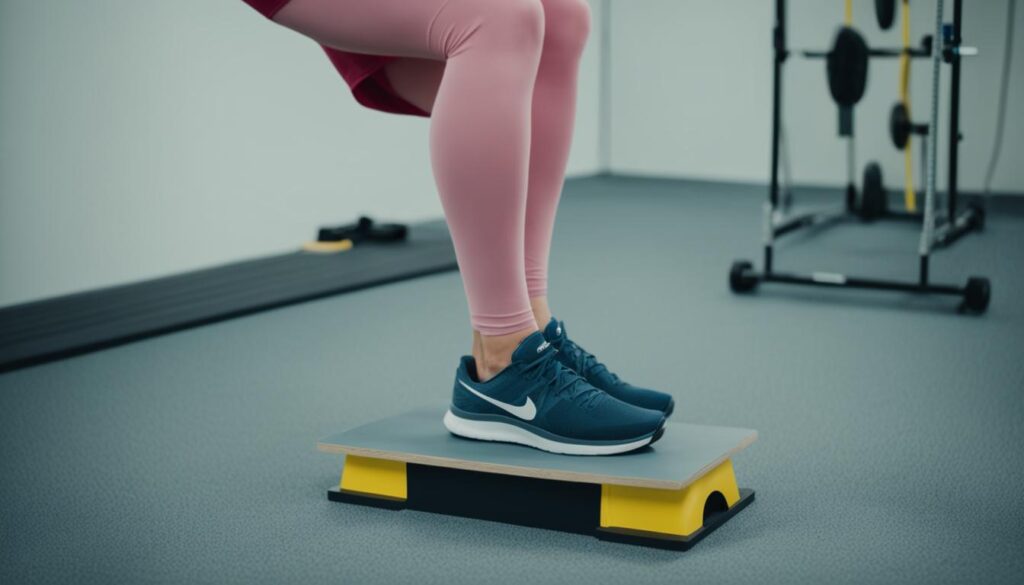
Flat Feet Exercises and Mobility Drills
It’s vital to target the causes of flat feet to enhance your squatting. We will share various exercises and drills for the feet and ankles. These are often forgotten but are crucial for a good squat.
Strengthening the Feet and Ankles
Strengthening the muscles in your feet is crucial if you have flat feet. Toe curls, picking up marbles with your toes, and scrunching a towel with your toes can help. Include resistance band work for your ankles and lower legs. Use bands for exercises like ankle circles and dorsiflexion to boost foot and ankle strength.
Improving Ankle Mobility for Better Squats
Good ankle flexibility is a must for correct squat form, especially if you have flat feet. Try exercises like calf raises and ankle circles, along with stretches. Doing these before and after squats helps get your lower body ready and speeds up recovery.
By working on your feet and ankles, you make it easier to control your body while you squat. This improves how well you do and lowers your risk of getting hurt.
Footwear and Equipment Considerations
The right shoes can improve your squats if you have flat feet. They help you both perform better and feel more comfortable. We’ll look at what to seek in shoes to give you better support. Also, we’ll check out the benefits of having shoes designed for squats and lifting.
Choosing the Right Shoes for Flat Feet
Finding good shoes for flat feet is key for squats. Go for shoes with strong arch support, a broad sturdy base, and a solid heel counter. These stop your feet from rolling too much inwards. Shoes that let your toes move freely can also help. This improves how your foot moves and helps with balance. New Balance, Brooks, Asics are great brands for shoes that work well for flat feet.
Using Squat Shoes or Weightlifting Shoes
Special shoes can boost your performance and comfort when squatting with flat feet. Squat shoes or weightlifting shoes have a hard, raised heel. This design makes it easier for your ankles to move, and it helps you stand up straighter. It’s very useful if your ankles don’t bend much, which is common with flat feet. Brands such as Adidas, Nike, and Reebok have a good selection of these types of shoes.
Progressions and Regressions
If squatting with flat feet is new, take it slow to go deeper and carry more weight. Our tips will show you how to gently step up your squat depth. We’ll also cover ways to dial back so you can get stronger and more flexible. By smartly adjusting your squats up or down, you can safely hit your fitness targets and beat any roadblocks.
Gradually Increasing Squat Depth
Starting slowly with squats is key if you’re just beginning. Begin with squats you can do easily, like bodyweight or goblet squats. Focus on keeping your form correct and steady. Then, as you get fitter and more flexible, add more weight. But always remember to keep a steady and even posture.
Listening to your body is crucial as you aim to squat deeper. For some, stepping wider or standing up a bit straighter helps. Try out different tweaks and measure your improvement. This way, you’ll find what works best for your feet when squatting.
Regressing to Build Strength and Mobility
Adding easier exercises into the mix can also be very helpful. Squat regression exercises like box squats, step-ups, and split squats are great. They target your legs and help you get ready for the full squat move.
Focusing on strength and flexibility for flat feet squats will make a big difference. By working on what’s holding you back, you can smoothly get back to deep squats. This approach also lowers the chance of getting hurt along the way.
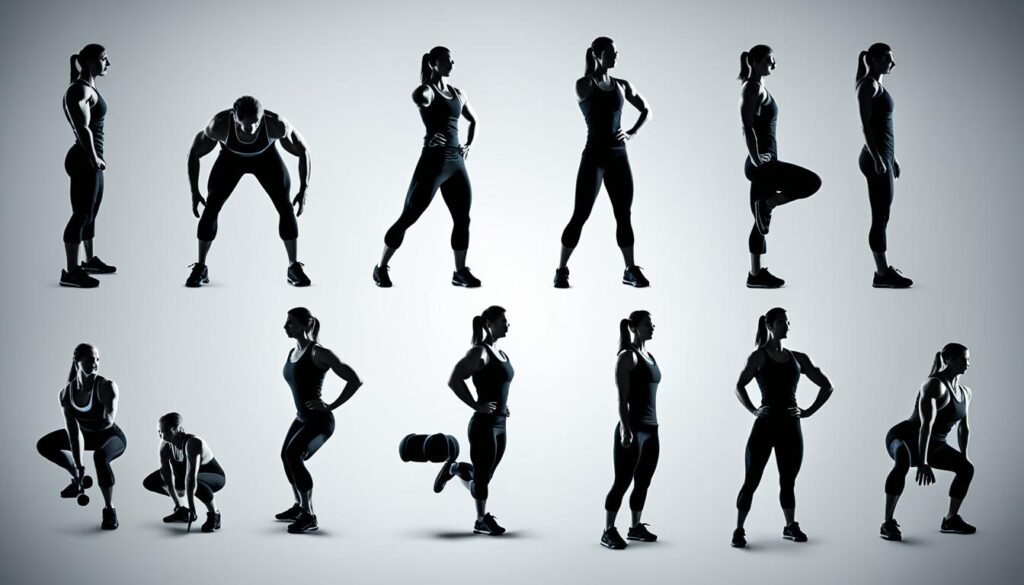
Flat Feet and Strength Training
Strength training is key for people with flat feet. It boosts lower-body strength, stability, and muscle balance. You should do different types of squats and fix any muscle imbalances. This approach helps overcome the challenges of flat feet and boosts your squatting abilities.
Incorporating Squat Variations
Different squat styles are important for those with flat feet during strength training. They work muscles in unique ways and can fix imbalances that make flat feet worse. Some squats that help are:
Goblet Squats: They get your ankles moving better and strengthen your core. This helps you keep the right posture while squatting.
Box Squats: They make your lower body stronger and more stable. Plus, they teach your body how to place your feet correctly by feeling the ground as you squat.
Front Squats: These focus on your front leg muscles. They can fix muscle imbalances and make your squat form better.
Addressing Muscle Imbalances
It’s also important to fix any muscle imbalances that come with flat feet. Common issues are:
- Weak foot and ankle stabilizers
- Tight or overactive calf muscles
- Weak hip abductors and external rotators
Work on these muscles with specific exercises and drills. This improves lower-body strength and stability. It makes squatting easier with flat feet.
Squatting with Flat Feet: Common Mistakes to Avoid
If you have flat feet, squatting the right way is extra hard. But knowing the common mistakes can keep you safe and make your squats better. Let’s look at what often goes wrong and how to fix it.
A big mistake is when your knees turn in too much, known as knee valgus. This adds stress to your knees and can cause pain. To avoid it, always keep your knees over your toes and activate your glutes and hips. This helps keep your knees in the right place.
Many also lean too far forward when they squat. This might happen because of tight ankles or trying to make up for flat feet. Leaning forward too much can hurt your lower back. Keep your chest up, tighten your core, and make sure your weight is on your heels and toes. This will help you stand up straighter while squatting.
For people with flat feet, not being able to move their ankles well is a big issue. It can stop you from getting low enough in your squats. Work on exercises to loosen up your ankles. You might also find help from heel lifts or special shoes. They can let you squat deeper and safer.
Watch out for these mistakes and work to fix them. Use the right techniques, do ankle exercises, and use the best gear. This way, you can avoid getting hurt and get better at squatting, even with flat feet.
Conclusion
In conclusion, squatting with flat feet is tricky. But, with the right tips and tricks, we can do it well. Understanding how flat feet affect us, using the correct form, and fixing issues with strength and flexibility are key. This will let us squat correctly, making our legs stronger and more stable.
It’s important to be patient and work hard. Getting better at squatting if you have flat feet takes time. By using the advice from this guide, we can overcome this challenge. We’ll reach our top form, becoming strong and balanced people. And the journey will lead to better leg strength, balance, and mobility.
As we keep working on our squatting, let’s remember the key points we’ve learned. Being focused, dedicated, and open to changes is crucial. This way, we’ll beat the issues of squatting with flat feet and enjoy its many benefits.

